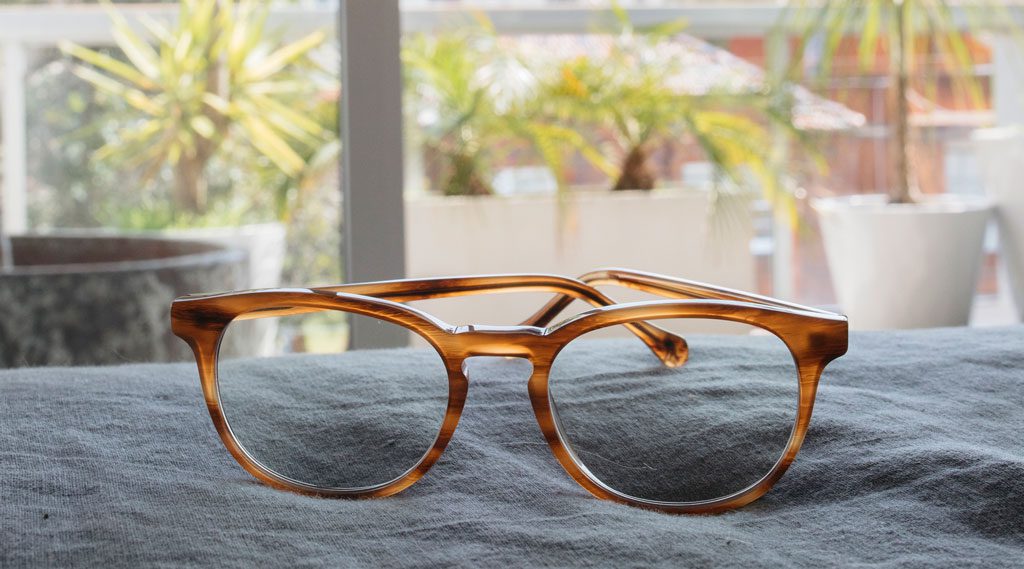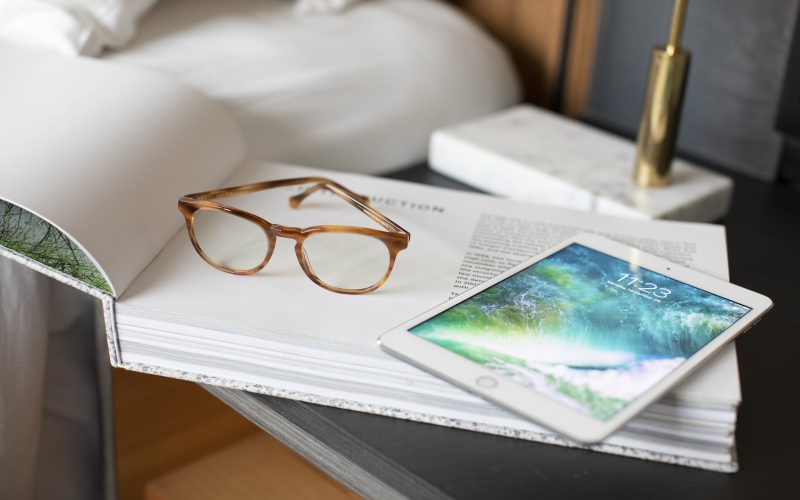The eyes are one of the most precious parts of the human body. Along with our other innate senses, our eyesight helps us navigate the world. Our eyes have a tough job dealing with a range of environments, some of which may result in stress and discomfort. This leads to the need for light sensitivity glasses.
What is light sensitivity or photophobia?
As mentioned, our eyes are tasked with helping us navigate the world. From moving between indoors and outdoors on bright sunny days, staring at computer screens all day, driving at night, and watching TV, light sources could be considered the main stressors causing eye discomfort. If the discomfort worsens over time with accompanying symptoms such as intense pain, excessive squinting, excessive tearing, and/or burning sensations, it may be a condition called Photophobia or Light Sensitivity—often leading to the need for light sensitivity glasses.
Photophobia is not an eye disease, but a symptom of extreme light intolerance and linked to several different conditions. To some degree, most of us are sensitive to bright and/or fluorescent lights, but those suffering from photophobia may experience a range of symptoms—from minor or mild irritation to serious debilitating reactions. Symptoms can include dizziness, headaches and migraines, severe eye pain, excessive blinking, blurriness, and eye inflammation.
Given that photophobia affects each individual differently, there are a few ways to combat painful light sensitivity such as:
- Reducing screen time and/or adjusting brightness on electronic devices
- Wearing computer glasses or sunglasses for photophobia
- Choosing natural lighting for indoor settings when possible
- Considering vision therapy
- Implementing the 20/20/20 rule recommended by the AAO
- Considering Blue Light glasses (counters harmful Blue Light emitted by electronic devices)
- Seeking medical attention if symptoms worsen
Just remember, photophobia can’t be completely prevented, but it can be managed. You can do so by choosing to wear indoor sunglasses for light sensitivity or trying the suggestions above.
Benefits of Using Light Sensitivity Glasses
Light plays a major role in our lives and depending on your sensitivity level, bright light can be debilitating, affecting the way you go about your daily life. We’re often confronted by bright light, that is out of our control. For instance, a break in the clouds allowing the sun to shine through, walking into a store that has glaring fluorescent lights, or dealing with headlights while driving at night. That said, by wearing the right glasses for light sensitivity, your daily tasks just might become easier.
Although the best step to take in combating light sensitivity is addressing the underlying cause(s), several studies have indicated and/or confirmed that light sensitivity glasses (also known as fluorescent light sensitivity glasses) may be helpful in alleviating and reducing discomfort when it comes to light sensitivity. From recommending glasses and sunglasses for light sensitivity, many vision, and headache specialists and experts have seen relief from symptoms associated with and exacerbated by light sensitivity.
Many sufferers have claimed less frequent migraines and headaches, less pain associated with eye strain, a reduction in watery eyes, blurriness and eye fatigue, an increased ability to be outdoors longer, and be better equipped for night driving. When looking for the best sunglasses for light sensitive eyes or indoor glasses, it’s best to consider the lens technology. You want to look for glare reduction, the filtering of harmful Blue Light, UVA and UVB protection, polarized lenses, or 360-degree protection.

How Light Sensitivity Glasses Work
Now that we’ve explored what light sensitivity glasses are and what they do, it’s time to understand how they work; understanding the visible light spectrum (the spectrum of light we can see visibly) is the first step.
Visible Light Spectrum
As a brief overview, the visible light spectrum is made up of all the colors in the rainbow. Red light waves sit to the left; as you move to the right there is orange, yellow, green, blue, and violet light, with other colors in between. The colors we naturally see reside along the visible light spectrum according to how long their wavelengths of energy are—UV (ultraviolet) light has the shortest wavelength, while red has the longest.
Filter Ultraviolet Light
UV light, which comes from the sun, carries with it a significant amount of energy that can damage and burn eyes. Sitting next to UV light on the visible light spectrum, Blue Light has just as much energy and can pose the same dangers without proper eye protection. Indoor glasses and sunglasses for sensitive eyes often have a precision tint or filter called FL-41, designed to filter out and block blue-green wavelengths, fluorescent light, LED lighting, bright sunlight, and other reflective lights that may affect the eyes.
Provide Eye Protection
Aside from curbing eye damage, the number of migraines may be decreased, along with a reduction in other symptoms that amplify photophobia. The best sunglasses for sensitive eyes or indoor glasses are those that completely protect the eyes and as well as help soothe painful symptoms associated with light sensitivity. Felix Gray has a wonderful collection of eyeglasses for those with light sensitivities, designed with the latest technology, and available in the latest styles.
